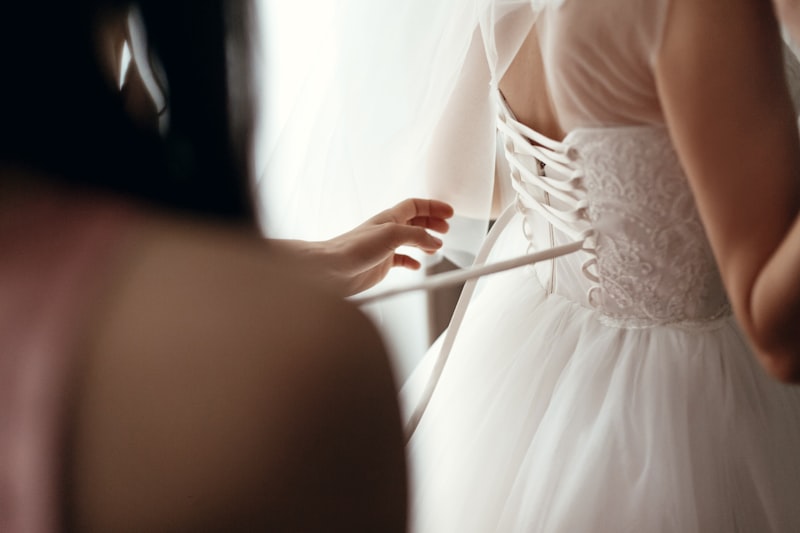Navigating Size Charts in Wedding Dress Shopping: A Comprehensive Guide
Navigating Size Charts in Wedding Dress Shopping: A Comprehensive Guide
Shopping for a wedding dress is a significant experience for every bride. However, navigating the complexities of size charts can often be a daunting task. Each designer or boutique may have a unique sizing system, leading many brides to feel overwhelmed during their search for the perfect gown. In this article, we'll explore the intricacies of size charts in Wedding Dress Shopping, delve into tips for making informed choices, and address some common questions about this vital topic.
Understanding the Importance of Size Charts
When embarking on your Wedding Dress Shopping journey, understanding size charts is crucial. Unlike standard clothing sizes, wedding dress sizing can vary significantly between designers. This variation can be attributed to factors such as brand style, fabric type, and regional sizing standards. Using size charts accurately ensures that you choose a dress that enhances your figure and fits comfortably on your special day.
Common Size Chart Metrics
Typically, wedding dress size charts include a range of metrics such as bust, waist, hip measurements, and sometimes even height. Here’s an overview of common measurements found in wedding dress size charts:
| Measurement | Size 2 | Size 4 | Size 6 |
| Bust | 33" (84 cm) | 34" (86 cm) | 35" (89 cm) |
| Waist | 25" (64 cm) | 26" (66 cm) | 27" (69 cm) |
| Hip | 35" (89 cm) | 36" (91 cm) | 37" (94 cm) |
| Height | 5'6" (168 cm) | 5'6" (168 cm) | 5'6" (168 cm) |
It’s important to note that these sizes can significantly vary from brand to brand. Therefore, always refer to the specific size chart provided by the designer or boutique you are purchasing from.
How to Take Your Measurements Correctly
Getting accurate measurements is essential when selecting a wedding dress. Here’s a step-by-step guide on how to take your measurements:
- Bust: Measure around the fullest part of your bust, keeping the measuring tape horizontal.
- Waist: Measure around the smallest part of your waist, usually just above your belly button.
- Hip: Measure around the widest part of your hips while keeping your feet together.
- Height: Measure from the top of your head to the floor, wearing the shoes you plan to wear on your wedding day.

What to Consider When Choosing a Size
Once you have your measurements, you need to interpret the size chart correctly. Here are some tips:
- Body Shape: Consider your body shape (e.g., hourglass, pear, apple) when selecting a size, as this can affect how the dress fits.
- Designer Standards: Remember that some designers use "bridal sizing," which often differs from everyday clothing sizes. You may find yourself fitting a size larger than what you typically wear.
- Alterations: Most Wedding dresses can be altered for a perfect fit. It’s advisable to choose a size that accommodates your measurements while allowing room for adjustments.
Common Size Chart Questions and Answers
As brides navigate the Wedding Dress Shopping process, several questions tend to arise regarding size charts:
1. What if my measurements fall between two sizes?
If your measurements place you in between two sizes, it is generally recommended to size up. It is easier to take a dress in than to let it out, especially considering the intricate structures of Wedding dresses.
2. How do I know if a dress will fit me well?
While size charts provide a starting point, the best way to ensure a good fit is to try on the dress. If visiting a store isn’t possible, check if the designer offers a fit guide or consult customer reviews for insight.
Tips for Successful Wedding Dress Shopping
- Do Your Research: Familiarize yourself with the size charts of various designers before making any purchases.
- Order Ahead: Wedding dresses often take several months to arrive. Ensure you order your dress well in advance of your wedding day.
- Plan for Alterations: Factor in the time and budget for any alterations you may need to make for a perfect fit.
- Bring Support: Bring family or friends along for support and a second opinion when trying on dresses.
Conclusion: The Key to Navigating Size Charts
Navigating size charts effectively can make your Wedding Dress Shopping experience less stressful and more enjoyable. By understanding each designer's sizing standards, taking accurate measurements, and considering your unique body shape, you can select a gown that fits beautifully and flatters your figure. Remember, shopping for your wedding dress is not just about finding a size; it's about choosing a gown that makes you feel confident and radiant on your special day. Always remember to plan ahead, and don’t hesitate to reach out to boutiques for guidance on their specific size charts and suggestions. Happy shopping!
